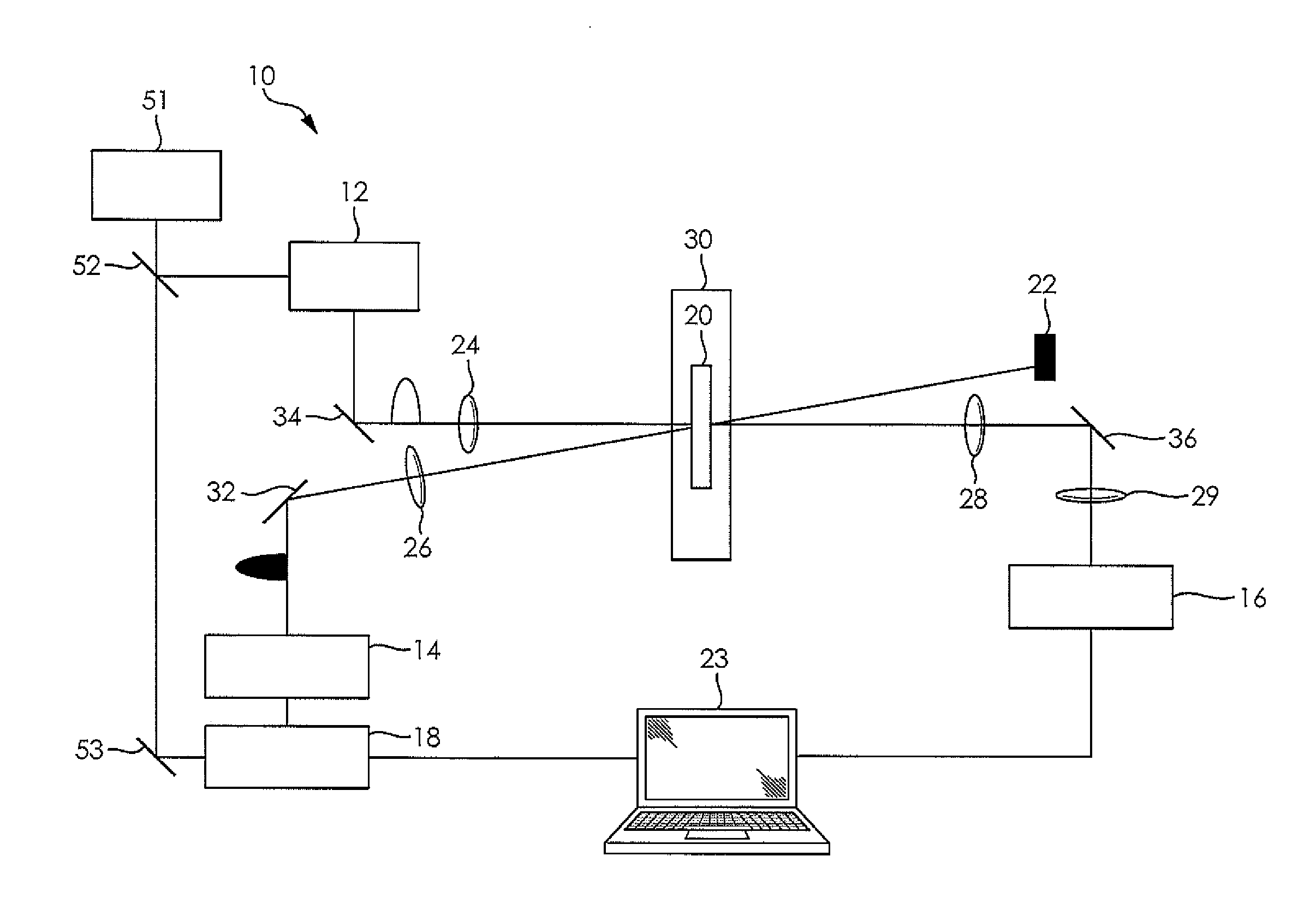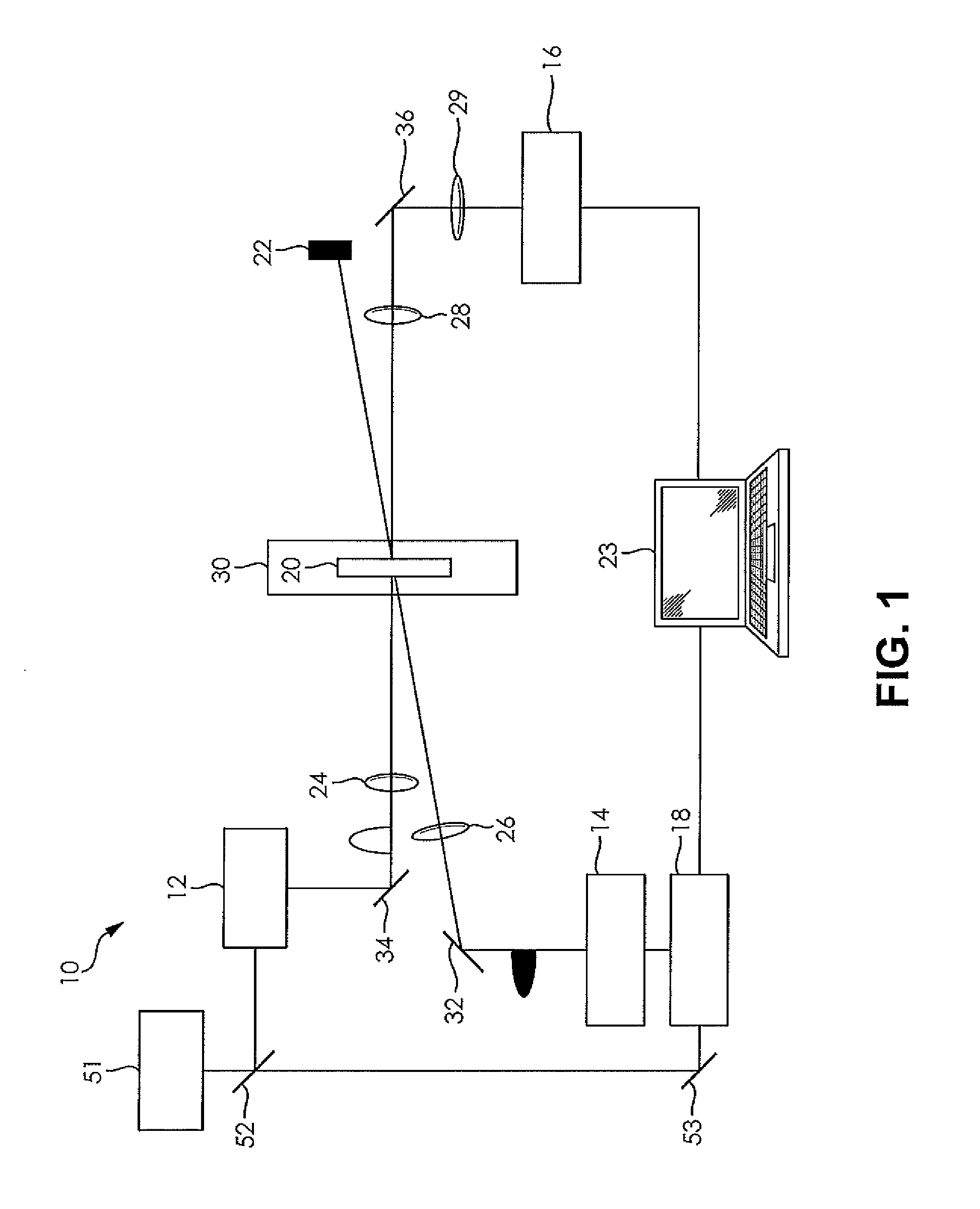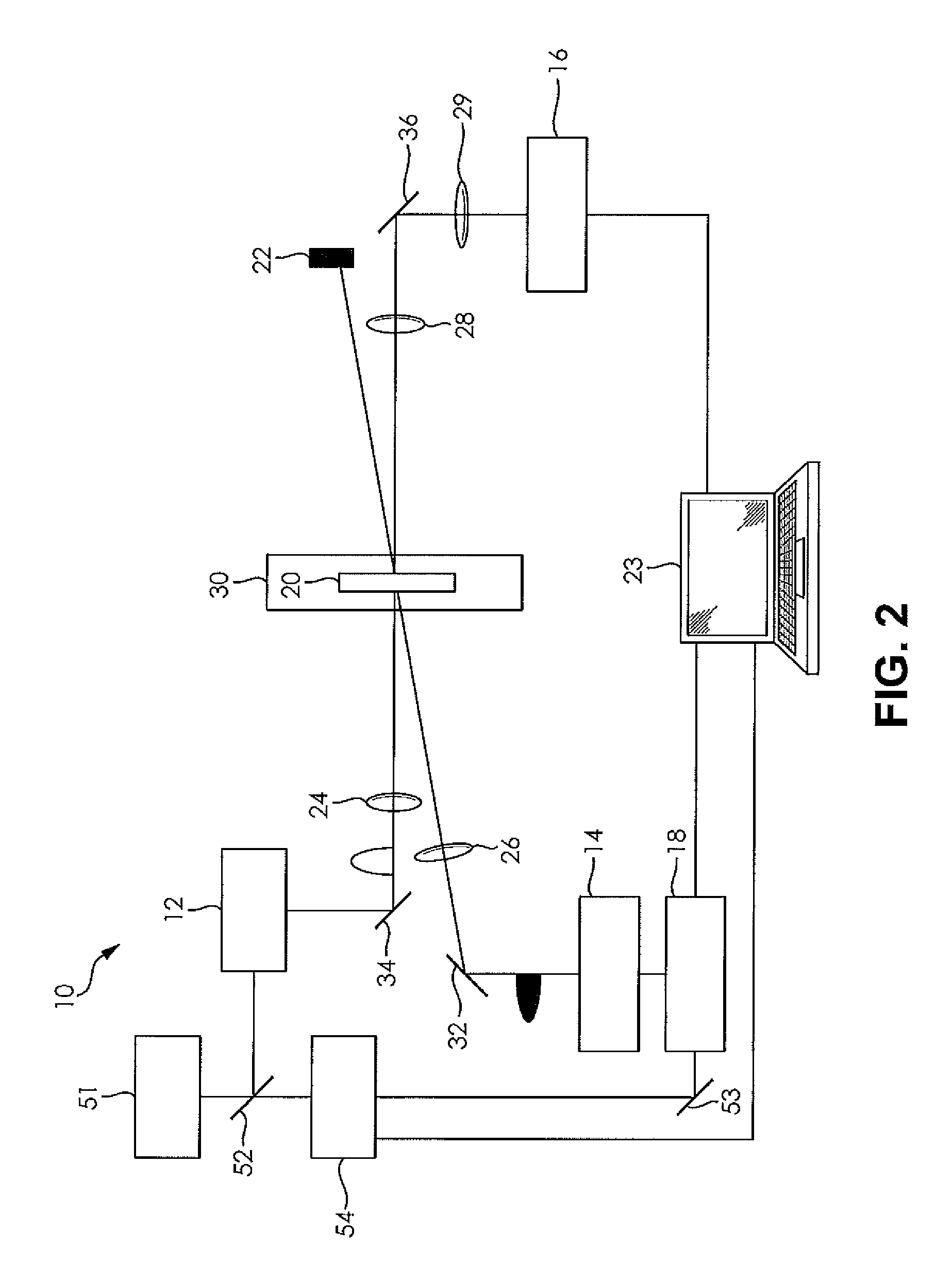Flash photolysis system
a flash photolysis and flash technology, applied in the field of laser flash photolysis, can solve the problems of large footprint, high cost of amplified femtosecond lasers, and inability to meet the energy requirements and achieve the effect of lowering the energy requirement of pump and probe light sources
- Summary
- Abstract
- Description
- Claims
- Application Information
AI Technical Summary
Benefits of technology
Problems solved by technology
Method used
Image
Examples
Embodiment Construction
[0016]The following detailed description and appended drawings describe and illustrate various exemplary embodiments of the invention. The description and drawings serve to enable one skilled in the art to make and use the invention, and are not intended to limit the scope of the invention in any manner. In respect of the methods disclosed, the steps presented are exemplary in nature, and thus, the order of the steps is not necessary or critical.
[0017]Referring to the figures, each illustrates an LFP system 10 which includes a probe light source 12, a pump light source 14, a detector 16, and a delay generator 18. The probe light source 12 shown is a photonic crystal fiber pumped by a laser 51. The probe light source 12 is adapted to be focused to areas as small as several square microns and can be focused to areas than about 1 square micron. It is understood that the probe light source 12 may be any conventional probe light source that is adapted to be focused in such manner, such a...
PUM
| Property | Measurement | Unit |
|---|---|---|
| area | aaaaa | aaaaa |
| area | aaaaa | aaaaa |
| area | aaaaa | aaaaa |
Abstract
Description
Claims
Application Information
 Login to View More
Login to View More - R&D
- Intellectual Property
- Life Sciences
- Materials
- Tech Scout
- Unparalleled Data Quality
- Higher Quality Content
- 60% Fewer Hallucinations
Browse by: Latest US Patents, China's latest patents, Technical Efficacy Thesaurus, Application Domain, Technology Topic, Popular Technical Reports.
© 2025 PatSnap. All rights reserved.Legal|Privacy policy|Modern Slavery Act Transparency Statement|Sitemap|About US| Contact US: help@patsnap.com



